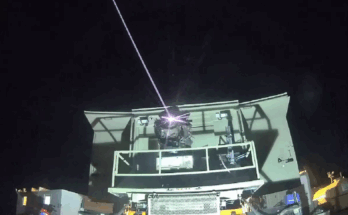
The month of June kicked off in a very big way with a massed drone attack launched by Ukraine against targets deep within Russia. The success and nature of the mission caught the world’s attention for several days running and, among other things, drew a strong spotlight on the challenges faced by nations in developing counter-drone techniques.
The elaborately planned and executed action, now known to history as ‘Operation Spiderweb’ featured UAS pre-positioned beyond any early detection and defense measures before attacking. The event illustrated, once again, that frontline protection is not nearly enough, and a long-term strategy of multiple layers of various kinds of C-UAS is likely the only truly effective way to deal with the threat.
Soon after the attack, the U.S. announced its renewed attention to the UAS threat. Among myriad executive orders emanating from the White House in recent months, June 6 saw one aimed at maintaining control of U.S. airspace from malicious drone operators. The directive creates a Federal Task Force to review existing rules, close legal gaps and recommend new tactics for countering drones that endanger people, disrupt mass events or spy on critical infrastructure.
Already deeply invested in the effort, L3Harris Technologies was rewarded just three days after the new EO with a new contract through the U.S. Department of Defense for additional Vehicle Agnostic Modular Palletized ISR Rocket Equipment (VAMPIRE) portable counter-drone systems. The new order builds on the first delivery and installation of the VAMPIRE systems in 2023 in support of European operations.
For its part, DroneShield, another leader in counter-drone, one day later, on June 10, announced a major expansion into Europe with the launch of its first manufacturing and assembly facility outside of their home country, Australia. According to the company, the European site will serve as both a sales hub and a second production line for select hardware.
Just six days later, DroneShield announced its largest contract to date, valued at $61.6 million, through the newly created European entity. The contract covers handheld detection and counter-drone systems along with related accessories.
More news regarding European efforts dropped on June 16 with the signing of development contract by MBDA to equip the Italian Army with a very short-range air defense (VSHORAD) system. Announcing the contract during Paris Air Show, MBDA also unveiled the name of the missile – Fulgur – at the core of the system.
According to MBDA, Fulgur is a man-portable, supersonic, fire and forget, all weather, day and night interceptor, equipped with a seeker with image processing capabilities and counters a threat set that includes small drones, helicopters and fighter jets.
Just a day after MBDA’s announcement, came news of a Preliminary Market Engagement Notice from the U.K. Ministry of Defence, indicating that the British Army is pursuing urgent acquisition of vehicle-mounted Laser Directed Energy Weapons (LDEWs) to counter hostile small UAS at standoff ranges exceeding one kilometer.
As stated in the Notice, the requested LDEW solutions must integrate the laser effector, power generation and storage systems, thermal management, electro-optical sensors, and tracking capabilities into a single mobile platform suitable for frontline deployment. The contract period is scheduled from August 1, 2025, through March 31, 2026, with supplier engagement activities, including one-on-one consultations, running from June 16 to July 11, 2025.
Last, but not least for June, more details regarding a sweeping counter-drone effort in the Middle East were made public. On the 23rd, research and development company SRC, Inc., announced their part in the recent $1 billion foreign military sales agreement between the U.S. government and the State of Qatar. The company announced that it will deliver a suite of its C-UAS technologies, involving the first international sale of the U.S. Army’s Fixed Site-Low, Slow, Small Unmanned Aircraft System Integrated Defeat System (LIDS).
Andrew Dardine is lead analyst for Forecast International's Defense Electronic Systems group. He is the primary author of Forecast International's Electronic Warfare Forecast and co-author of Electro-Optical Systems Forecast and C4I Forecast. Andrew is also a regular contributor to FI's Defense & Security Monitor blog, offering insights into developing technologies such as directed-energy and next-generation jamming systems. His analysis of such vital market areas as EO/IR systems and electronic countermeasures technology has been cited in Defense News, Aerospace Daily, and Bloomberg Businessweek, among other news media. He has also written about the electronic defense market for Aviation Week and the Journal of Electronic Defense.




